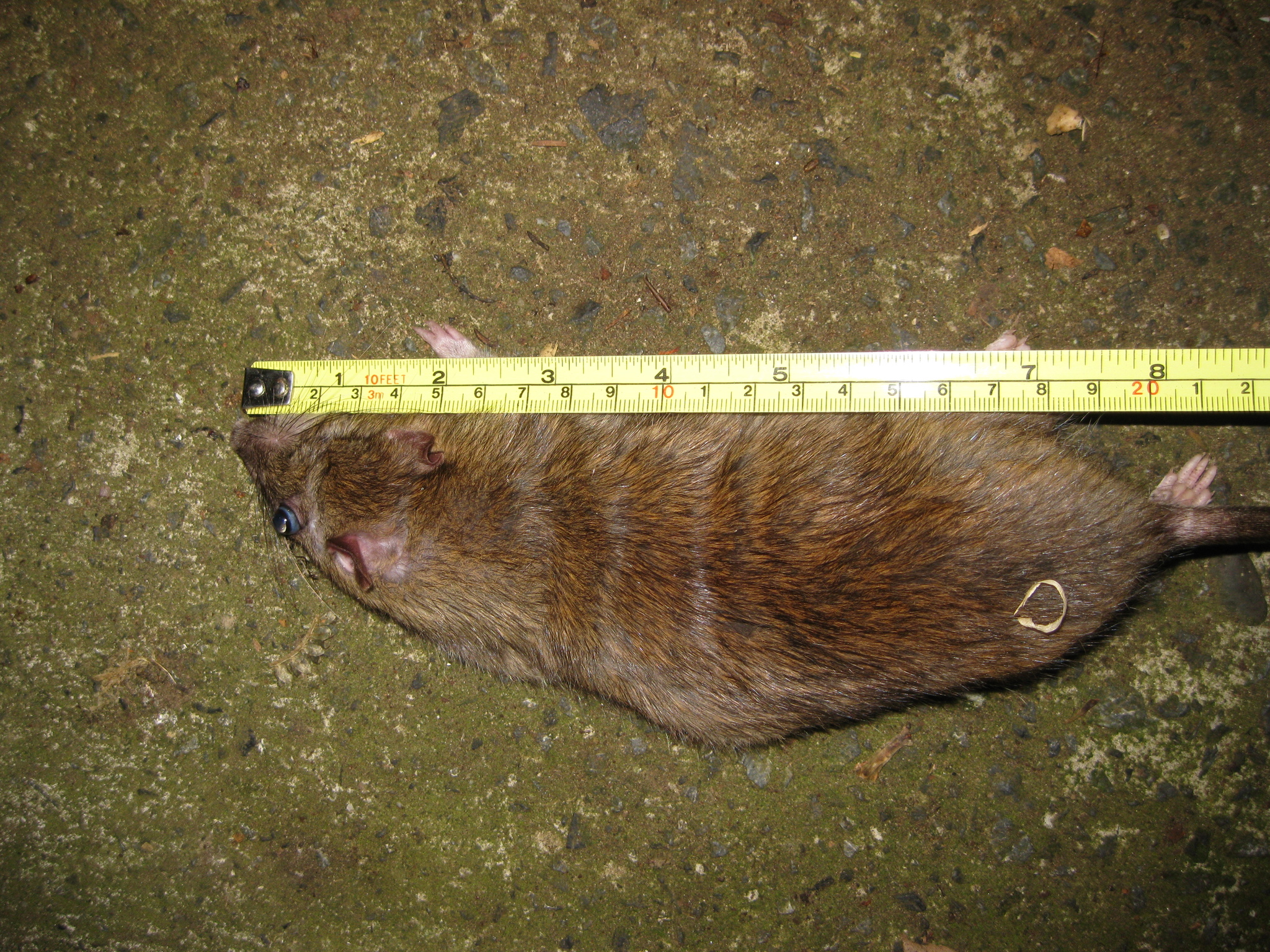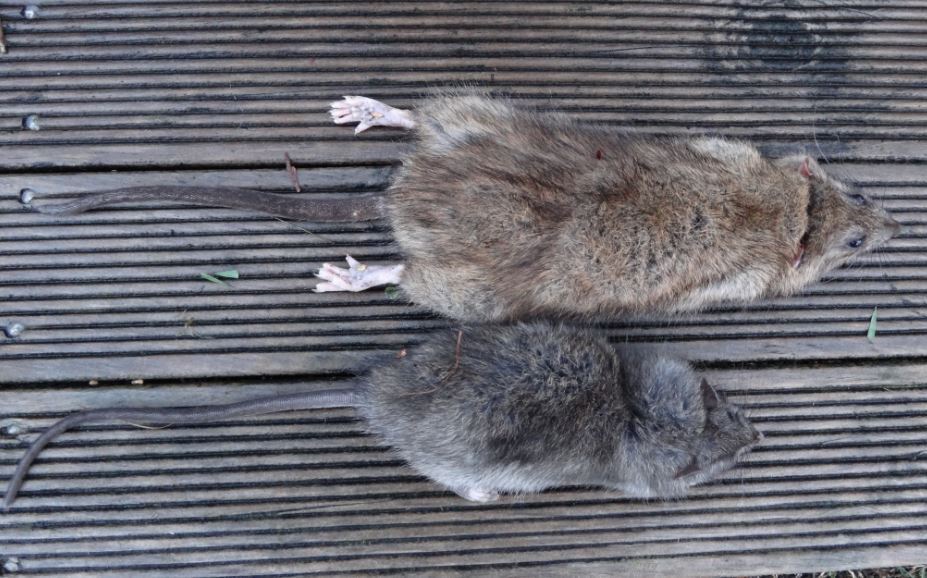Brown Rat
Rattus norvegicusSummary 5
The Brown rat (Rattus norvegicus), is also referred to as the Norway rat, Pouhawaiki, Sewer rat, and Water rat. In New Zealand it is dominant in urban areas and near waterways and human habitation. It is far less common in bush and forested areas.
Identification 6
Weight
Typically 200g - 300g (up to 450g)
Length, head-plus-body
250mm (max)
Tail
Clearly shorter than head-plus-body length:
Thick, with pale underside:
Ears
14.0-22.0 mm;
Hind-foot, length
30.0mm - 41.5mm (adult)
Hind-foot, colour of upper-side
Always completely pale:
Fur, colour on back
Brown:
Fur, colour on belly
White-tipped grey giving irregular colour.
Habits
- Burrows extensively;
- Climbs much less frequently than the other rats;
- Strong swimmer;
- Nests underground;
- Very wary.
Identification features based on https://www.stat.auckland.ac.nz/~smiller/rat_id
Comparisions 6
Comparison of R. rattus (top) and R. norvegicus (bottom):
Comparison of R. norvegicus top, R. rattus bottom:
Comparison of R. norvegicus and R. rattus ear hairs - sometimes R. norvegicus ears are described as 'hairy' and R. rattus ears are described as naked, but it depends on how closely you look at them. Both have hairs, but diagnostically you can differentiate them by zooming right in:
R. norvegicus - obvious hairs extend beyond edge of ear :
 🔗
🔗
R. rattus - fine hairs do not extend beyond edge of ear :
Most iNaturalist photos aren't really high enough resolution to detect this difference though.
Juvenile rats 6
All the above applies to adult rats, we really need a section dealing with the differences seen in juvenile rats. This is just a placeholder for that section!
Notes about identifying dead rats 6
Identification features such as head shape, ears, and eyes can be affected by being squashed in a trap, eg "large" eyes may simply be the result of the eyes bulging out as a result of head trauma.
Wet fur usually looks dark, so a wet Brown rat may well look black.
And remember "it is not necessarily a straight-forward task identifying what you have caught. The information provided can be fairly variable/vague and should be taken with a grain of salt. Every source says that an identification should be made based on the weight of identifying features, as it is rare to find a specimen matching every feature perfectly. " (🔗rat_id)
Sources and Credits
- (c) Ouwesok, some rights reserved (CC BY-NC), https://www.flickr.com/photos/95975006@N08/49118609151/
- (c) oscarkokako, some rights reserved (CC BY-NC-ND), uploaded by oscarkokako, https://inaturalist.nz/observations/5159752
- (c) njanowski, some rights reserved (CC BY-NC), uploaded by njanowski, https://inaturalist.nz/observations/62337263
- (c) strewick, some rights reserved (CC BY), uploaded by strewick, https://inaturalist.nz/photos/313911556
- Adapted by Tony Wills from a work by (c) Wikipedia, some rights reserved (CC BY-SA), https://en.wikipedia.org/wiki/Rattus_norvegicus
- (c) Tony Wills, some rights reserved (CC BY-SA)
More Info
- iNaturalist NZ taxon page
- Animal Diversity Web
- ASM Mammal Diversity Database
- Atlas of Living Australia
- Biodiversity Heritage Library
- BOLD Systems BIN search
- CalPhotos
- Global Biodiversity Information Facility (GBIF)
- iNaturalist Mammal Working Group
- Maryland Biodiversity Project
- NatureServe Explorer 2.0
- NBN Atlas
- Rat identification in New Zealand
- VertNet
- 日本のレッドデータ検索システム

















